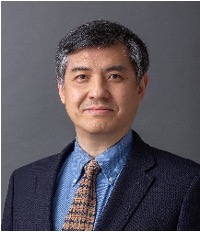High-throughput Powder
Diffraction Using White X-ray and Simulated Energy Dispersive Array Detector
Hong Wang1*,Xiaoping Wang1, Weiwei Dong2, Haoqi Tang3,
Peng Zhang3, Lanting Zhang1, Tieying Yang4,
Peng Liu2*, X.-D. Xiang3*
1Materials Genome Initiative Center and School
of Materials Science and Engineering, Shanghai Jiao Tong University, Shanghai
200240, China
2Institute of High Energy Physics, Chinese
Academy of Sciences, Beijing 100049, China
3Department of Materials Science and Engineering,Southern University of
Science and Technology, Shenzhen 518055, China
4Shanghai Advanced Research Institute, Chinese Academy of Sciences,
Shanghai 201204, China
ABSTRACT: High-throughput powder
X-ray diffraction (XRD) with white X-ray and an energy dispersive detector
array are demonstrated on a CeO2 powder sample on a bending magnet synchrotron
beamline at Shanghai Synchrotron Radiation Facility (SSRF), using a simulated
energy dispersive array detector consisting of a spatially scanning
Silicon-Drift-Detector (SDD). Careful analysis and corrections are applied to
account for various experimental hardware and diffraction angle related
factors. The resulting diffraction patterns show that the relative strength
between different diffraction peaks from energy dispersive XRD (EDXRD) spectra
is consistent with that from angle-resolved XRD (ADXRD), which is necessary for
analyzing crystal structures for unknown samples. The X-ray fluorescent (XRF)
signal is collected simultaneously. XRF counts from all pixels are integrated
directly per energy, while the diffraction spectra in q-space, resulting in
much improved peak strength and signal-to-noise ratio for the array detector.
Comparing with ADXRD, the diffraction signal generated by white X-ray beam over
monochromic light under the experimental condition is about 104 times higher.
The FWHM of the peaks in q-space was found to be dependent on the energy
resolution of the detector, the angle span of the detector and the diffraction
angle. It is possible for EDXRD to achieve the same or even smaller FWHM as
ADXRD under the energy resolution of the current detector if the experimental
parameter is properly chosen.

Keywords: High
throughput experiment, White beam X-ray diffraction, Energy dispersive array
detector, EDXRD, ADXRD

Dr. Hong Wang is a "Zhiyuan" Chair Professor and Director, Materials Genome Initiative Center, Shanghai Jiao Tong University. He earned a B.S. in Geophysics from Peking University and a Ph.D. in Materials Science and Engineering from the University of Illinois at Urbana-Champaign. He worked in thin film research field for long time with global companies such as SONY, Panasonic and Guardian Industries Corp. in the United States before joining China Building Materials Academy, Beijing, in 2010 as the Chief Scientist for the National Research Center for Glass Processing and Associate Director of the State Key Laboratory of Green Building Materials. Since 2012, he's been actively promoting the Material Genome Initiative, a new paradigm for acceleration from materials discovery to deployment, in China. His current research also includes development of coated glass and smart windows for energy efficient buildings, as well as solar heat conversion coatings.